#multilayer pcb
Explore tagged Tumblr posts
Text
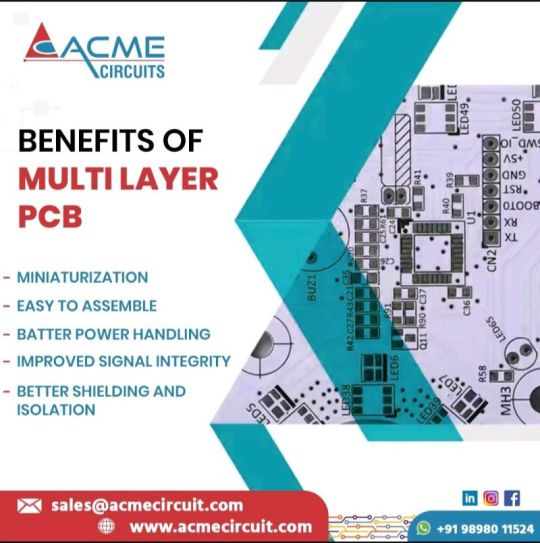
Multilayer PCBs (Printed Circuit Boards) offer numerous advantages over their single-layer or double-layer counterparts. These benefits arise from their enhanced design capabilities, improved performance, and greater flexibility. Here are some key advantages of multilayer PCBs:
#PCB#printed circuit board manufacturers#electronic cable assembly#pcb manufacturing#pcb assembly manufacturer#pcb assembly services#pcb board manufacturer#printed circuit board manufacturer in india#circuit board manufacturing#pcb exporters#pcba#pcb manufacturer#pcb design#pcbassembly#multilayer pcb
2 notes
·
View notes
Text
Syrma SGS Technology Forms Joint Venture with Shinhyup Electronics to Manufacture Multi-Layer PCBs
Syrma SGS Technology Limited, a leading electronics manufacturing services (EMS) company in India, has announced a strategic joint venture with Shinhyup Electronics Co. Ltd, a reputed South Korean electronic components manufacturer. The agreement was officially signed on July 15, 2025, and also involves Syrma Strategic Electronics Private Limited, a wholly owned subsidiary of Syrma SGS. The…
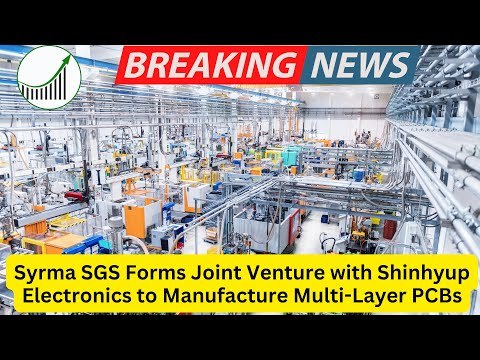
View On WordPress
#advanced pcb tech#component localisation#electronics india#electronics industry india#electronics manufacturing partnership#electronics manufacturing services#electronics news india#ems electronics#ems sector india#flexible pcb india#high end pcb manufacturing#india korea tech#Make in India electronics#multilayer pcb#pcb component production#pcb for 5g#pcb for automotive#pcb india news#pcb industry news#pcb manufacturing india#pcb production india#shinhyup electronics#shinhyup pcb technology#syrma business update#syrma component supply#syrma joint venture#syrma korea partnership#syrma manufacturing deal#syrma manufacturing expansion#syrma pcb production
0 notes
Text
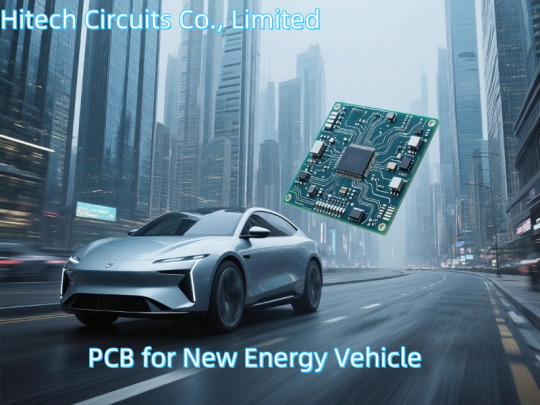
Common Printed Circuit Boards in New Energy Vehicles
As new energy vehicles handle high voltage and current, various PCB types are utilized to conduct and control electricity safely across functions:
Multi-layer PCBs 6-12+ layer boards employ complex internal circuitry to precisely transmit signals and power between electronic modules. More layers enable more robust connectivity.
Thick Copper PCBs Ultra-thick 2oz, 3oz and even 4oz copper reliably channels currents up to 400A+, applied for motor control and power conversion requiring stable high ampacity traces.
HDI PCBs High-density interconnect technology with microscopic vias and dense circuitry allows integrating more functionality and components in confined control units, saving space and weight.
Large-area PCBs Sprawling PCBs powering functions like body electronics and chassis controls enable more consolidated layouts and simplified connectivity.
At Hitech Circuits, we are a premier PCB manufacturer providing one-stop PCB fabrication and assembly services to meet the diverse needs across multiple industries. With years of experience and cutting-edge capabilities, we deliver high-quality, quick-turn PCB solutions tailored to each application’s unique requirements.
Our Core Expertise:
Wide range of PCB technologies: HDI, rigid-flex, RF/microwave, thermal boards, and more Advanced manufacturing processes: high-density interconnect, buried/blind vias and more Fast prototype to production cycle times Strong engineering support from quote to delivery High-reliability PCBs for demanding applications
Whether you need prototypes for new product development or high-volume PCB production, Hitech Circuits is your trusted partner.
1 note
·
View note
Text
How to Manufacture High Multilayer PCB
In the world of electronics, the demand for high multilayer PCB (Printed Circuit Board) has surged due to the increasing complexity of devices. High multilayer PCBs are essential in applications ranging from consumer electronics to aerospace and medical devices. This blog will guide you through the manufacturing process of high multilayer PCBs, emphasizing key steps, materials, and technologies involved.
Understanding High Multilayer PCB
High multilayer PCB refers to printed circuit boards that contain multiple layers of conductive pathways. Typically, these boards have more than four layers, and they can go up to 20 layers or even more, depending on the application requirements. The primary advantage of high multilayer PCBs is their ability to accommodate complex circuits in a compact form factor, which is crucial for modern electronic devices.

1 note
·
View note
Text
Top Multi Layer PCB Manufacturer in Ahmedabad
Megabyte Circuit is a leading multi layer PCB manufacturer in Ahmedabad, delivering precision-built multilayer PCBs for industrial, commercial, and tech applications with reliable quality control.
0 notes
Text

Excellent Multilayer PCB Manufacturer in Shenzhen China
What is a multilayer PCB?
Multilayer PCBs are normal electrical boards that consist of two or more inner layers with a compact design, multiple functions, lightweight production, durability, and flexibility for a wide range of industries, including consumer electronics, telecommunications, defense and military, etc.
Multilayer circuit boards refer to circuit boards with three or more layers, two of which are on the outer surface, and the remaining layers are combined in the insulating board. The electrical connection between them is usually achieved through holes on the cross section of the circuit board. Multilayer printed circuit boards are most complicated than others, and are generally considered to be the most sophisticated PCB product due to their construction methods and design complexities.
How to identify multilayer pcb?
Multilayer printed circuit boards and double-sided PCB boards are similar in appearance. Ordinary people can’t see the difference between them without paying attention, or you can’t tell whether it is a double-sided PCB board or multilayer PCB board. So, how to distinguish between ordinary double-sided PCB boards and multi-layer PCB boards?
First of all, we must have an understanding of the number of layers of the circuit board. The number of layers of the PCB board is the inner layer. 1 layer is referred to as single layer PCB, and 2 layers is referred to as double sided PCB. Multilayer PCB board refers to 4-48 layers; the higher the number of layers, the higher the unit price. Because the inner layer of the circuit is to be pressed, the technical content is high, and the machine cost is relatively high.
Generally speaking, you can identify multilayer pcb by following:
The more layers, the larger the shadow in the sheet;
Dim shadows can be seen in the multi-layer PCB circuit board, if the shadow is light then you can see a little dim, and if the shadow is deep you can see the circuit clearly;
Multilayer PCB circuit boards generally have a smooth surface, especially when they are cleaned after forming and processing;
If you want to know how many layers of the PCB board are, and the precise data, you can only check through the IM inspection of the manufacturer or the PCB drawing of the development engineer.
Advantages of multilayer PCB board
1. Suitable for complex design Complex devices with a large number of components and circuits benefit from the use of multilayer PCBs. Devices with multiple uses and advanced features require this complexity. Many multi-layer PCB boards also have functions such as impedance control and electromagnetic interference shielding, which further improve the quality of PCB boards and equipment.
2. High power Due to the high circuit density, the circuit board is also more powerful. This means that they provide high operating capacity and speed, making them particularly suitable for advanced equipment.
3. Highly durable As the number of layers increases, thicker boards are more durable. Therefore, it can withstand more severe conditions.
4. Small size and light-weighted Small size and light weight are additional features of multilayer boards. This makes them ideal for device miniaturization.
5. Single connection point In terms of design simplicity and weight, the fact that multilayer pcb board work with a single connection point is an additional advantage.
Disadvantages of multilayer PCB board
High processing cost (special production equipment needed).
Long product cycle.
Design tools are expensive.
The test method is complicated.
Maintenance is difficult.
Please feel free to contact [email protected] if you have any PCB needs.
For more, please visit https://hitechcircuits.com/pcb-products/multilayer-pcb/
0 notes
Text
PCB Manufacturing

PCB manufacturing is a precision process involving designing, etching, and assembling printed circuit boards. We specialize in producing high-quality PCBs tailored to your specifications. Our advanced technology and rigorous quality control ensure reliability and performance. Trust us for efficient and cost-effective PCB manufacturing solutions to meet your electronic needs.
Visit Our Site: https://sqpcb.com/products/pcb-manufacture
#customized pcb boards#customize pcb#pcb board#pcb china#aluminium pcb board#multilayer pcb#printed circuit board#aluminum base pcb#circuit board#custom circuit boards
0 notes
Text

Flex circuit connects to is a rigid printed circuit board, but cable harnesses, polyester membrane switches, and even other flex circuits are also possible connection partners. #FPCway#flexible circuit board#flexible PCB board#PCB#flex circuit PCB#PCB#multilayer PCB
0 notes
Text
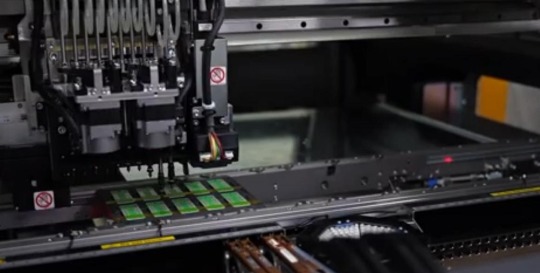
Full Product Lines of Printed Circuits Boards
Based on different base material, there're three basic types but not limited to: FR-4/3/2 PCB, CEM-3 PCB, Metal Core PCB and Special PCB series (such as Ceramic PCB).
For FR-4 PCB, right now, we just class it into S/S PCB, 2 Layers PCB, Multi-Layers PCB (20 layers).
For MCPCB, which full name is Metal Core Printed Circuit Board, there're single layer MCPCB, double layers MCPCB and double sided MCPCB (2 layers on each side).
Special PCB, in fact, should be sorted to above two tapes, but considering special requirements, so we list it seperated. Right now, we can make RF boards (Rogers, Taconic materials), Heavy Copper PCB (4~20 OZ/ft2), Ceramic PCB, HDI, and so on.
0 notes
Text
Navigating the Future of Electronics with Rigid-Flex and Taconic PCB Manufacturers
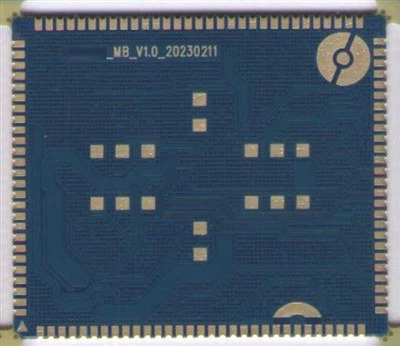
Today’s Printed Circuit Boards (PCBs) are much more flexible and advanced than the first rigid versions. Compact devices with great capabilities and multiple features have earned popularity in the electronics industry, leading to the rise of Rigid-Flex PCBs and Taconic PCBs. The use of these technologies enables unique designs, improves how long the device works, and maintains good electricity flow. Rigid-flex PCB Manufacturers can move and also keep their form, similar to how rigid boards function. They particularly shine in high-speed or RF and microwave applications. Dependable and effective products rely greatly on what electronics do.
Rigid-Flex PCBs: Hybrid Structure with High Functionality
Rigid-Flex PCBs take attributes from both stiff and flexible PCBs and merge them into one board. As a result, rigid and flexible boards no longer need connectors and cables, letting us make assemblies that are lighter and more space-saving. You can find these boards in smartphones, medical devices used on patients, military systems and aerospace devices. They are suited for use in places that require resistance to vibration and bending due to machines. In manufacturing, various layers are made and bonded together using very accurate methods. Therefore, it is only experienced manufacturing companies that can keep products of constant quality and performance.
Key Advantages of Rigid-Flex PCB Manufacturers
Important benefits of using well-known Rigid-flex PCB Manufacturers are their excellent design aid and advanced methodologies. They depend on laser direct imaging for precise work and optical inspection that finds problems in the early stage. Tests using temperature fluctuation and electrical overload guarantee that the product will function in any extreme condition. Manufacturers typically boost efficiency by assisting with design changes that lower the number of components and simplify assembly. In addition, they guarantee that flexible circuit boards meet all IPC standards for quality. Because they are involved in developing products and moving them into mass production, they help make the process more efficient.
Taconic PCBs: High-Frequency Performance Excellence
Taconic PCB Manufacturers are produced from proprietary PTFE-based laminates designed by Taconic with low dielectric loss and thermal stability. These boards are the preferred option for RF, microwave, and high-speed digital designs. They are most prevalent in satellite communications, radar systems, 5G base stations, and aerospace communication modules. Taconic laminates have low signal attenuation and superior dimensional stability. They exhibit moisture resistance as well as heat tolerance, which makes them dependable in extreme working environments. Production using these laminates demands proficiency in drilling, plating, and multilayer bonding because of their special properties.
What to Expect from a Taconic PCB Manufacturers
The best Taconic PCB Manufacturers must possess extensive experience in working with high-frequency laminate material. It involves strict impedance control, surface preparation, and low-loss transmission line engineering. Cleanroom facilities, specially designed PTFE-compatible equipment, and precise lamination procedures are necessary for high-quality output. The producers may perform RF testing and thermal profiling to ensure circuit integrity. They also guide customers on stack-up selection as well as PCB layout according to end-use frequency requirements. By maintaining compliance with IPC and MIL-spec specifications, these companies ensure the critical applications' performance and safety.
Comparing Rigid-Flex and Taconic PCBs
Although both are sophisticated PCBs, Rigid-Flex and Taconic PCBs are for different technical applications. Rigid-Flex is prized for mechanical flexibility, whereas Taconic leads for signal transmission at high speeds. Rigid-Flex boards simplify systems and minimize space utilization in cramped enclosures, while Taconic boards maintain signal purity in communication networks. The components and manufacturing methods are quite different, as are the final-use applications. The two are chosen based on physical space, frequency range, and exposure to the environment. Designers will often talk to both varieties of manufacturers to match their circuit requirements with the appropriate solution.
Conclusion
As innovation speeds up in electronics, the need for Rigid-flex PCB Manufacturers and Taconic PCBs keeps increasing. Such technologies facilitate the development of lighter, faster, and more efficient devices across industries. With increasingly sophisticated design challenges, collaborating with an experienced manufacturer is crucial. BS Interconn Hong Kong Co., LIMITED differentiates itself by providing quality-oriented, customer-centric PCB manufacturing services. Whether you're creating a next-generation medical wearable or a state-of-the-art RF device, selecting a reliable Rigid-Flex or Taconic PCB producer guarantees that your product will outperform and outlast the competition.
#Rigid-flex PCB Manufacturers#Taconic PCB Manufacturers#flexible circuit boards#high-frequency PCB#RF PCB solutions#microwave PCBs#PTFE laminates#hybrid PCB design#aerospace PCB#medical device PCBs#5G PCB manufacturer#signal integrity PCB#low dielectric PCB#high-speed PCB#multilayer PCB assembly#IPC compliant PCBs#MIL-spec PCBs#advanced PCB manufacturing#Taconic laminate PCB#Rigid-Flex technology
1 note
·
View note
Text
How Permanganate Etch Improves PCB Surface Preparation
Discover how permanganate etching improves PCB surface preparation by removing resin smear, enhancing plating adhesion, and supporting complex multilayer builds. Ensure greater PCB reliability and performance with A-Gas Electronic Materials. Contact us today to optimise your processes.
#permanganate etch PCB#PCB surface preparation#PCB plating adhesion#PCB desmear process#multilayer PCB preparation#potassium permanganate PCB#PCB manufacturing UK#A-Gas Electronic Materials
0 notes
Text
Multilayer Pcb Market set to hit $171.7 billion by 2035
Industry revenue for Multilayer Pcb is estimated to rise to $171.7 billion by 2035 from $87.3 billion of 2023. The revenue growth of market players is expected to average at 5.8% annually for the period 2023 to 2035.
Multilayer Pcb is critical across several key applications including consumer electronics, telecommunications, automotive and healthcare. The report unwinds growth & revenue expansion opportunities at Multilayer Pcb’s Type, Application and End User including industry revenue forecast.
Industry Leadership and Competitive Landscape
The Multilayer Pcb market is characterized by intense competition, with a number of leading players such as Apple, Samsung, DuPont, Panasonic, Huawei, Cisco, Tesla, Bosch, Siemens, GE Healthcare, Molex and Fujitsu.
The Multilayer Pcb market is projected to expand substantially, driven by advancements in 5g technology and miniaturization of devices. This growth is expected to be further supported by Industry trends like Rise of Electric Vehicles (EVs).
Detailed Analysis - https://datastringconsulting.com/industry-analysis/multilayer-pcb-market-research-report
Moreover, the key opportunities, such as emerging iot applications, growth in renewable energy and expansion in emerging markets, are anticipated to create revenue pockets in major demand hubs including U.S., China, Japan, Germany and South Korea.
Regional Shifts and Evolving Supply Chains
North America and Asia-Pacific are the two most active and leading regions in the market. With challenges like high production costs, thermal management challenges and material dependence, Multilayer Pcb market’s supply chain from component supplier / system integrator to end-user industry is expected to evolve & expand further; and industry players will make strategic advancement in emerging markets including India, Vietnam and Brazil for revenue diversification and TAM expansion.
About DataString Consulting
DataString Consulting offers a complete range of market research and business intelligence solutions for both B2C and B2B markets all under one roof. We offer bespoke market research projects designed to meet the specific strategic objectives of the business. DataString’s leadership team has more than 30 years of combined experience in Market & business research and strategy advisory across the world. DataString Consulting’s data aggregators and Industry experts monitor high growth segments within more than 15 industries on an ongoing basis.
DataString Consulting is a professional market research company which aims at providing all the market & business research solutions under one roof. Get the right insights for your goals with our unique approach to market research and precisely tailored solutions. We offer services in strategy consulting, comprehensive opportunity assessment across various sectors, and solution-oriented approaches to solve business problems.
0 notes
Text

Multilayer PCB Manufacturing
Rigid Circuit Board Manufacturer & Assembly – One stop service PCB rigid Circuit Board is an important electronic component, support for electronic components, and a carrier for electrical connection of electronic components. Read on to learn more about multilayer PCBs, their uses and advantages in the world of modern electronics.
A Multilayer Printed Circuit Board, or Multilayer PCB, is a complex circuit board composed of multiple layers of conductive material and insulating material (usually fiberglass and epoxy resin) sandwiched together. Multilayer PCB or multilayer printed circuit boards are circuit boards composed of two or more conductive layers (copper layers). The copper layer is pressed together by the resin layer (prepreg). Each layer has a conductive path or copper trace, and each layer is connected to one another through pads and vias, which act as electrical conduits. This construction allows for more complex and dense circuitry to be designed, with greater functionality and reliability compared to single- or double-sided PCBs. Multilayer PCBs are commonly used in electronic devices such as computers, smartphones, and advanced medical equipment.
What is Multilayer Printed Circuit Board?
A Multilayer Printed Circuit Board (PCB) is a type of PCB that consists of several layers of conductive material and insulating material sandwiched together. The board is made by laminating together multiple thin layers of fiberglass or other insulating materials with copper foil.
An integrated circuit is placed on the board, and the copper traces connected to the circuit are etched onto the inner layers of the board. The inner layers are then sandwiched together with the outer layers, forming a multilayer structure.
Multilayer PCBs are used in high-end electronic products, such as advanced computers and mobile phones, where a high degree of density is required, and the manufacturing process is complex. They provide many benefits, including reduced size, increased reliability, and improved performance.
Multilayer PCBs are cost-effective because they reduce the total number of components needed and improve product reliability, thus reducing the need for frequent repair services or replacement. The design flexibility of these boards also allows for more efficient use of space and improved signal routing, which aids in the performance of the product.
So what’s Multilayer PCB Benefits / Advantages?
1. Increased Design Flexibility: Multilayer PCBs allow for more design flexibility and greater circuit density. With multiple layers, engineers have more space to incorporate more components and features, such as impedance control, shielding, and power planes, within the same board area.
2. Increased Reliability: Multilayer PCBs are more reliable than single sided PCBs, as they are less prone to issues such as signal interference, voltage drops, and thermal stress. This is because they have a higher number of conductive layers, which allows for better shielding and more stable power distribution.
3. Higher Component Density: Multilayer PCBs can accommodate a higher density of components in a smaller space while preventing signal interference. This results in a more compact and efficient design, saving manufacturers money on materials and production.
4. Improved Signal Integrity: With a multilayer construction, PCBs can have better signal integrity, which means less noise and less chance of signal interference. The numerous grounds and power planes help to suppress electromagnetic interference, resulting in better connection quality.
5. Better Thermal Management: Multilayer PCBs have better thermal conductivity, which reduces hot spots and improves heat dissipation. The extra layers also help to keep the heat from spreading across the board, which is important for high-power applications.
6. Cost-Effective: While the initial cost of multilayer PCBs may be higher than single or double-sided PCBs, the benefits in terms of increased density, reliability, and design flexibility can mean overall cost savings in the long run. Additionally, as manufacturing techniques have evolved, the cost of producing multilayer PCBs has become more competitive.
In summary, the benefits of multilayer PCBs include increased design flexibility, reliability, component density, and thermal management. They also offer improved signal integrity and can be cost-effective in the long run. These advantages make them suitable for complex electronic devices where high performance, reliability, and space-saving are required.
-While Multilayer Printed Circuit Boards (PCBs) offer many benefits over single- or double sided PCBs, there are also some potential drawbacks to consider:
1. Complexity: The multilayer PCBs are far more complex than their single-layered or double-layered counterparts. As the number of layers increases, so does complexity. This means that design and manufacturing is more challenging, which can lead to a higher cost of production.
2. Cost: Multilayer PCBs are generally more expensive than single or double-layered PCBs due to their complexity. The cost of producing multilayer PCBs can increase exponentially, and the cost of manufacturing is highly dependent on the number of layers in the board, the board size, and overall complexity.
3. Signal Integrity: Multilayer boards pose a higher risk of signal integrity issues due to the higher number of components and traces present in each layer. Signal interference, crosstalk, and noise can occur if proper precautions are not taken in the design process. It is therefore essential that the designer takes signal integrity into account while designing the board.
4. Manufacturing Challenges: The process of cutting, etching, drilling, and laminating the multiple layers of a PCB requires highly precise equipment, which can add to the cost of manufacturing. Moreover, misalignment of layers and flaw in lamination can lead to defects that can potentially cause the PCB to stop functioning correctly.
5. Environmental Impact: Multilayer PCBs contribute to electronic waste, which is a significant concern for the environment. The process of manufacturing multilayer PCBs consumes a considerable amount of energy, and the resulting waste can be toxic and difficult to recycle.
Overall, Multilayer PCBs offer many advantages over single or double-sided PCBs. However, there are several issues that need to be considered during the design and manufacturing process, to achieve optimal performance. To solve your problems, here HITECH Circuits provide solutions for you.
-Multilayer Printed Circuit Boards (PCBs) are used in a variety of applications where high performance and reliability are critical. Here are a few of the most common applications:
1. Communications: Multilayer PCBs are widely used in the telecommunications industry for various applications such as cell phone base stations, satellite communications systems, and other communication devices that require high-speed data transfer rates and minimal signal loss.
2. Computers: Multilayer PCBs are extensively used in computer motherboards, laptops, and other computing systems where high performance, reliability, and miniaturization are of utmost importance.
3. Medical Equipment: Multilayer PCBs are a key component in many medical devices, such as imaging equipment, patient monitoring systems, and surgical instruments, where high reliability and stability are required.
4. Automotive: The automotive industry uses Multilayer PCBs for applications such as engine control units, airbag systems, and lighting control systems, where reliability, durability, and efficient operation are essential.
5. Aerospace and Defense: Multilayer PCBs find extensive use in aerospace and defense applications, such as missiles, satellites, and other spacecraft, where superior performance and reliability are required in extreme conditions.
Overall, Multilayer PCBs are used in a wide variety of applications where increased functionality, reliability, and performance are required. With advances in technology, the use of multilayer PCBs is expected to continue to grow in the future.
PCB Manufacturing Services
As a PCB manufacturer in China, HITECH CIRCUITS provides PCB manufacturing services, and supplies consistent quality and affordable price of printed circuit boards globally. No matter it is PCB prototyping or PCB production project, we can meet your PCB fabrication needs in a variety of PCB materials and technologies.
HITECH CIRCUITS focuses on multilayer boards, impedance-controlled PCBs and HDI boards in varying complexities. We conduct 100% DRC checks for your designs when receipt of your Gerber files and PCB fabrication drawings to ensure the best quality possible circuit boards will be delivered on time.
PCB Manufacturer China
HITECH CIRCUITS is a PCB manufacturer in Shenzhen,China, we provide some of the most innovative printed circuit board technologies and highest quality standards in the industry. You can count on us to meet your needs from the simplest circuit boards to the most complex designs for prototypes and large quantity production.
0 notes
Text

As a top China PCB manufacturer, Hitech Circuits has a lot of experience and skill in every part of PCB production, from layout and design to manufacturing, testing, and after-sales support. All our work is done in our ISO-certified factory, ensuring high quality at every step. We focus on excellence, with each circuit board going through strict quality control before delivery. We make a wide range of printed circuit boards, including PCB prototypes, FR4 PCB, double-sided PCB, aluminum PCB, RF PCB, ceramic PCB, high-frequency PCB, and HDI PCB. If you need a reliable PCB manufacturer in China, contact us today! Just send email to [email protected] . For more information, please visit https://hitechcircuits.com/
#pcb manufacturer#pcb assembly#ceramic pcb#hdi pcb#PCB prototypes#fr4 pcb#double-sided PCB#multilayer pcb#aluminum PCB#pcb factory#pcb fabrication#RF PCB#high frequency
0 notes
Text
Flexible PCB Manufacturer - Custom Solutions for Innovative Electronics
We specialize in designing and manufacturing high-quality flexible pcb manufacture (PCBs) tailored to meet the demands of diverse industries. Our expertise in flexible circuit technology enables us to produce durable, reliable, and compact PCBs for applications ranging from consumer electronics to medical devices, automotive, and more. With precision engineering, fast turnaround times, and advanced manufacturing processes, we provide customized solutions that drive innovation in your electronic products.
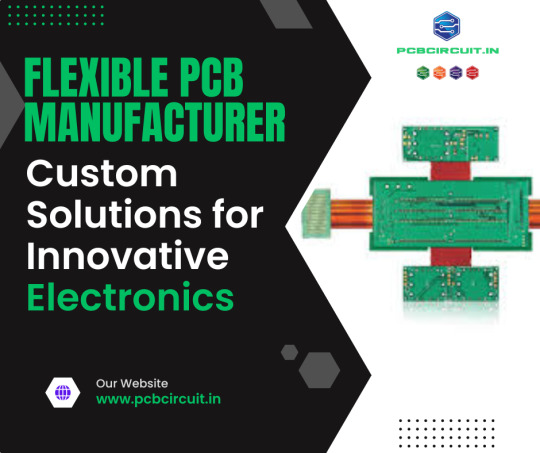
#best pcb manufacturer#flex pcb manufacturer#multilayer pcb manufacturer#pcb manufacturer in haryana#low-cost pcb manufacturer#pcb manufacturer#pcb manufacturer in delhi#quick turn pcb fabrication#pcb manufacturer in maharashtra#pcb manufacturer near me
0 notes
Text
Top PCB Manufacturer in India
PCBcircuit is a leading PCB manufacturer in India, offering high-quality printed circuit boards tailored to diverse industries. With advanced technology, precision engineering, and reliable customer support, we ensure efficient and cost-effective PCB solutions to power your innovations. Trust PCBcircuit for quality and excellence in PCB manufacturing.

#flex pcb manufacturer#prototype pcb manufacturing#pcb manufacturer#custom pcb manufacturing#low-cost pcb manufacturer#pcb fabrication#quick turn pcb fabrication#high-quality pcb manufacturing#multilayer pcb manufacturer
0 notes